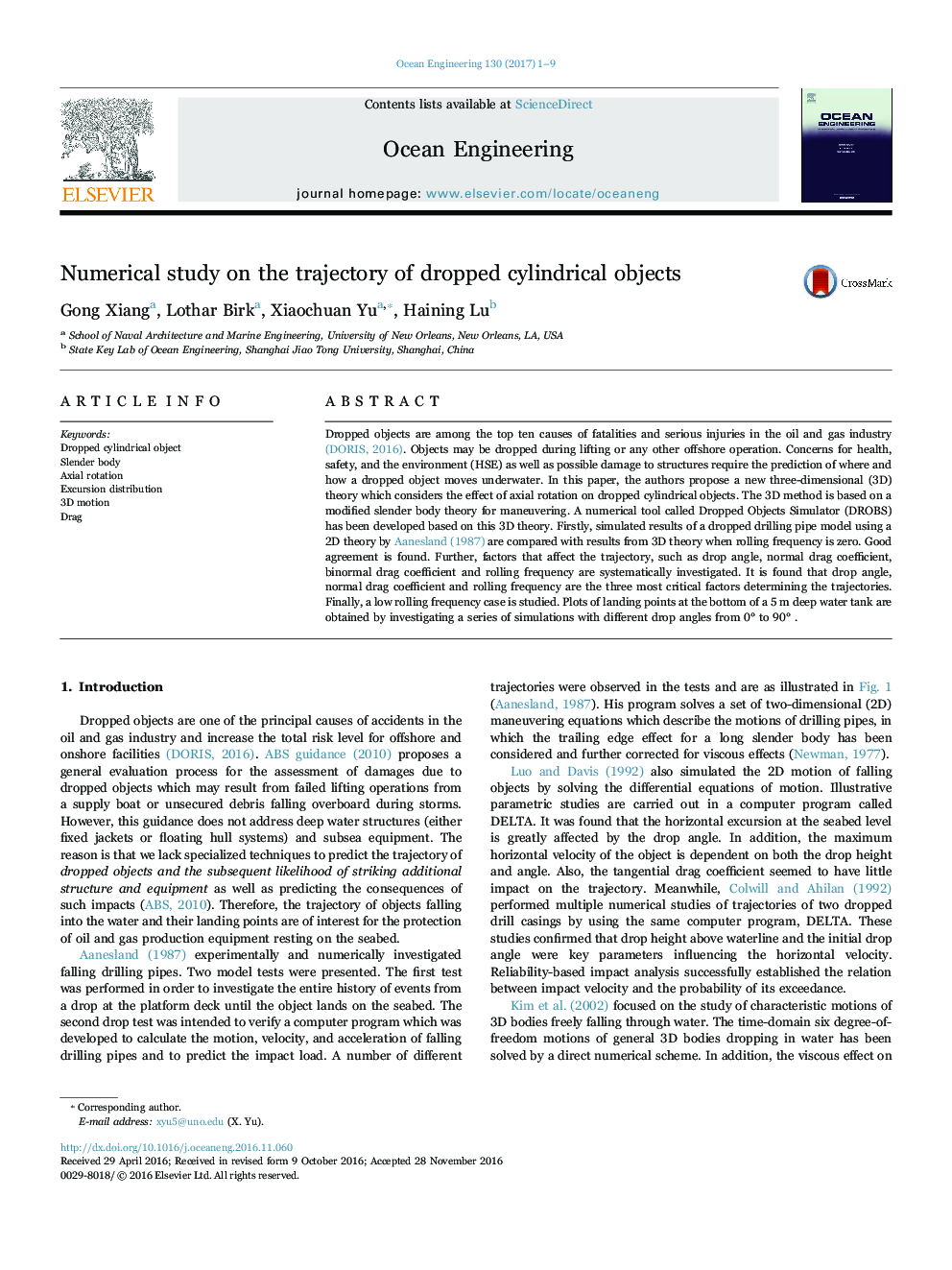| Article ID | Journal | Published Year | Pages | File Type |
|---|---|---|---|---|
| 5474608 | Ocean Engineering | 2017 | 9 Pages |
Abstract
Dropped objects are among the top ten causes of fatalities and serious injuries in the oil and gas industry (DORIS, 2016). Objects may be dropped during lifting or any other offshore operation. Concerns for health, safety, and the environment (HSE) as well as possible damage to structures require the prediction of where and how a dropped object moves underwater. In this paper, the authors propose a new three-dimensional (3D) theory which considers the effect of axial rotation on dropped cylindrical objects. The 3D method is based on a modified slender body theory for maneuvering. A numerical tool called Dropped Objects Simulator (DROBS) has been developed based on this 3D theory. Firstly, simulated results of a dropped drilling pipe model using a 2D theory by Aanesland (1987) are compared with results from 3D theory when rolling frequency is zero. Good agreement is found. Further, factors that affect the trajectory, such as drop angle, normal drag coefficient, binormal drag coefficient and rolling frequency are systematically investigated. It is found that drop angle, normal drag coefficient and rolling frequency are the three most critical factors determining the trajectories. Finally, a low rolling frequency case is studied. Plots of landing points at the bottom of a 5 m deep water tank are obtained by investigating a series of simulations with different drop angles from 0° to 90° .
Related Topics
Physical Sciences and Engineering
Engineering
Ocean Engineering
Authors
Gong Xiang, Lothar Birk, Xiaochuan Yu, Haining Lu,
